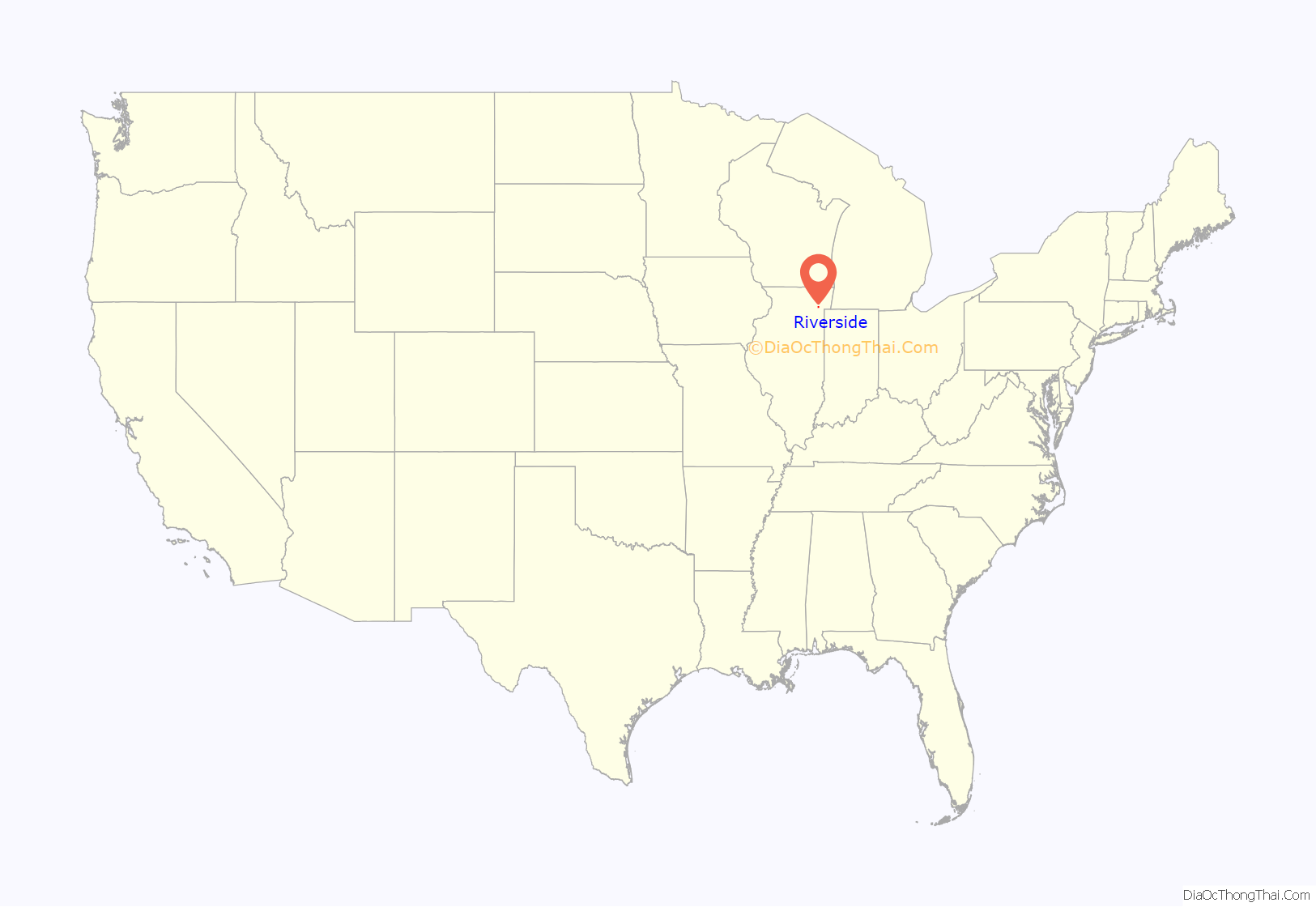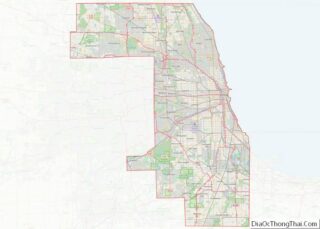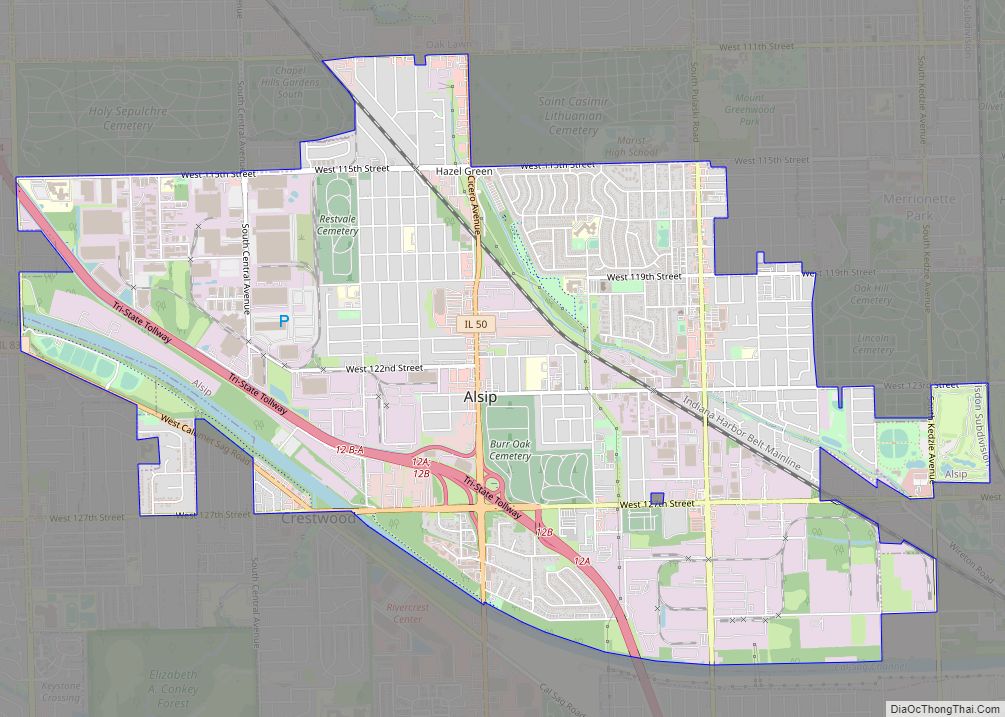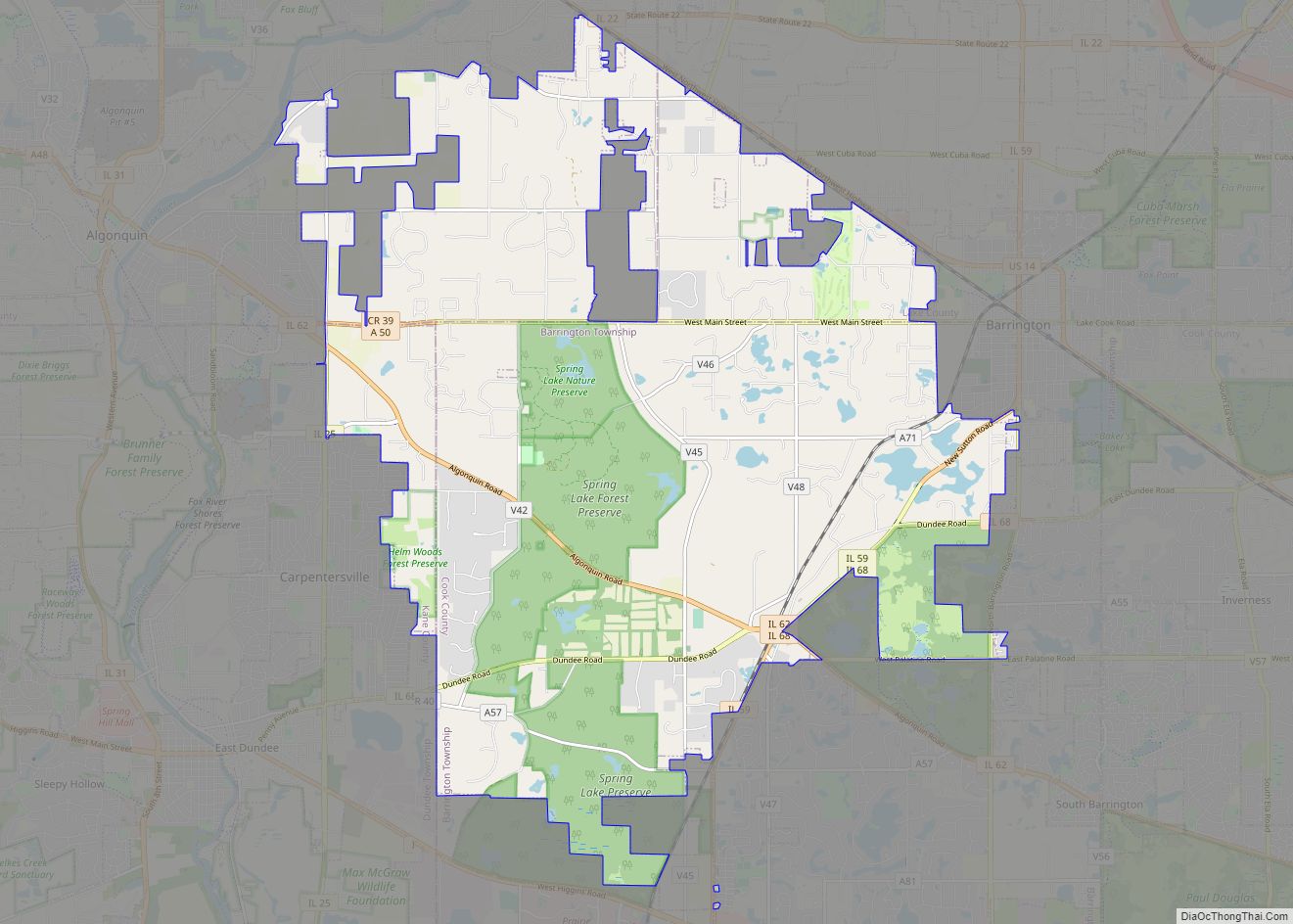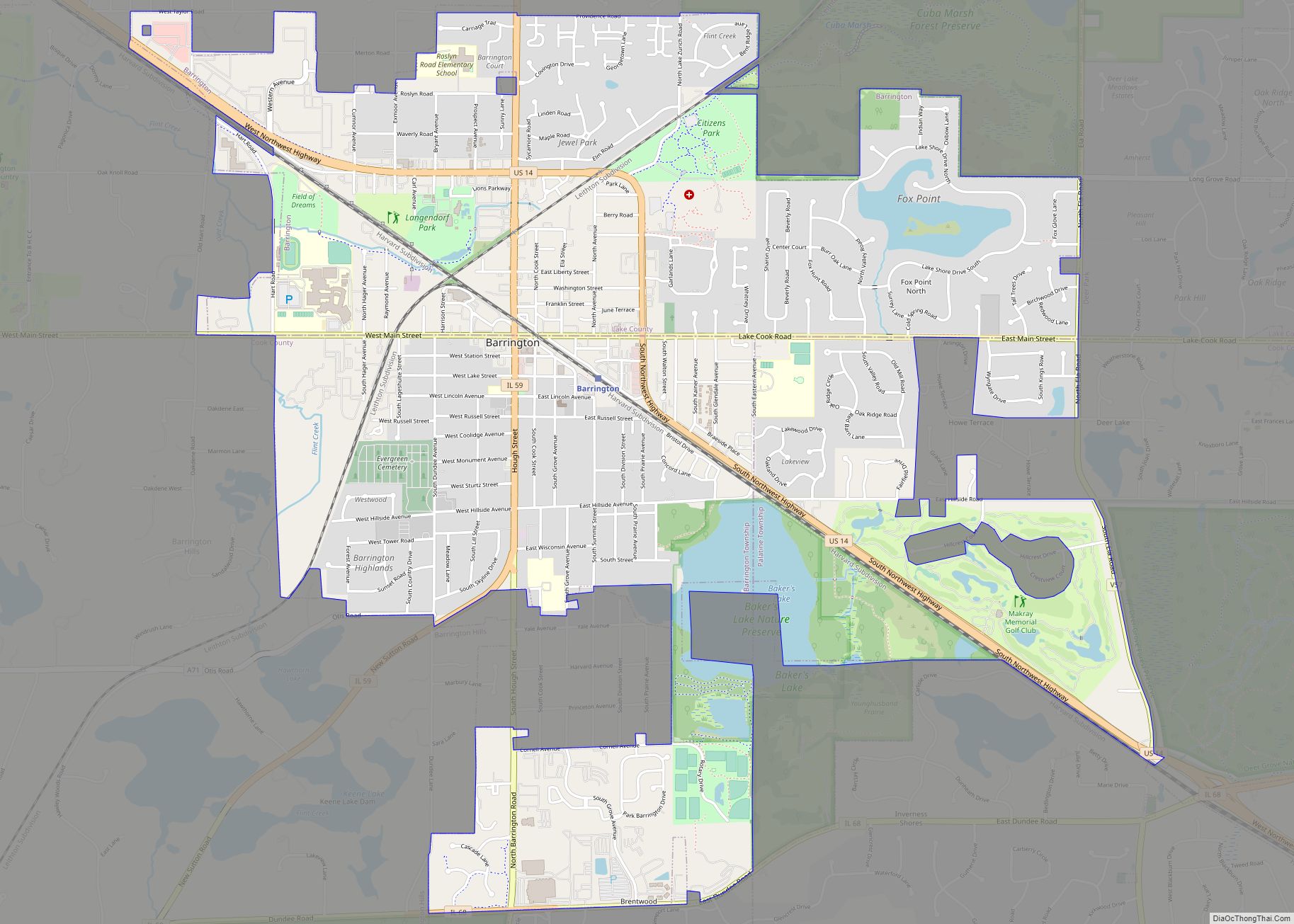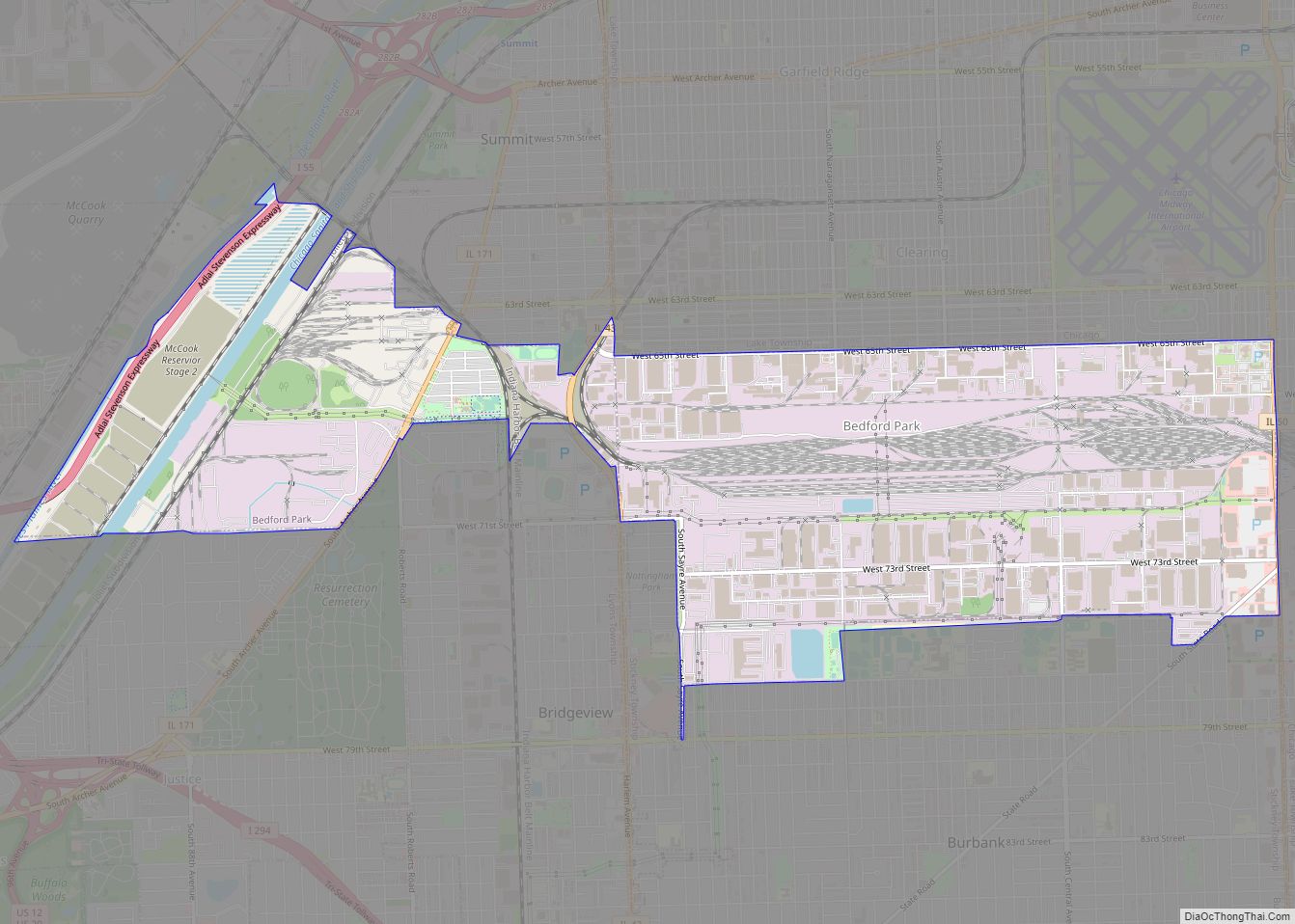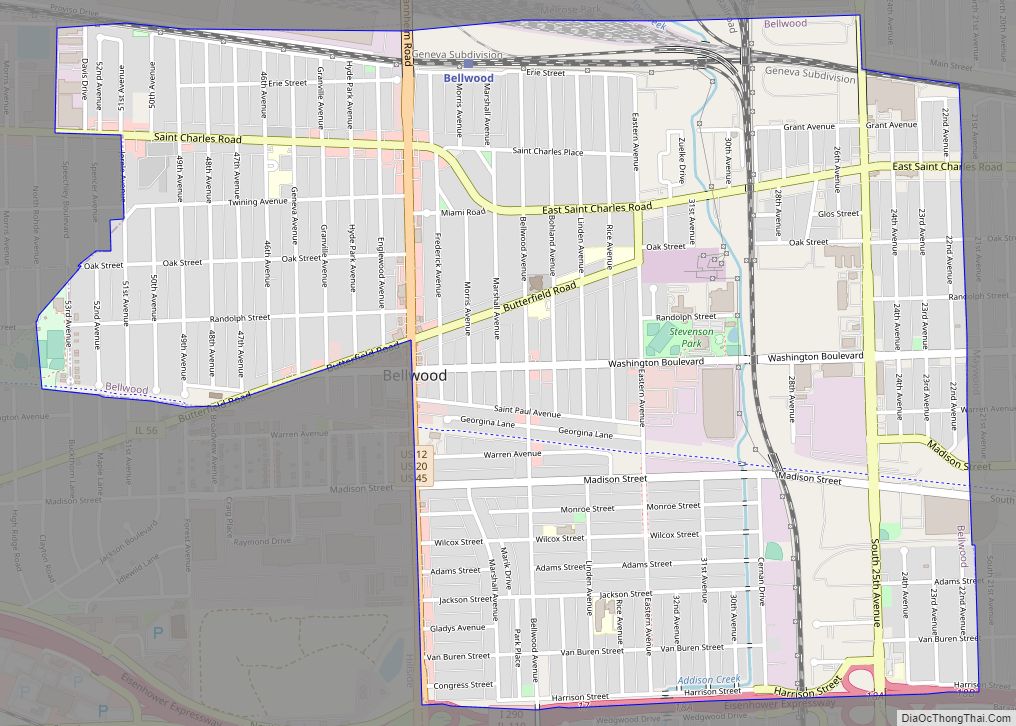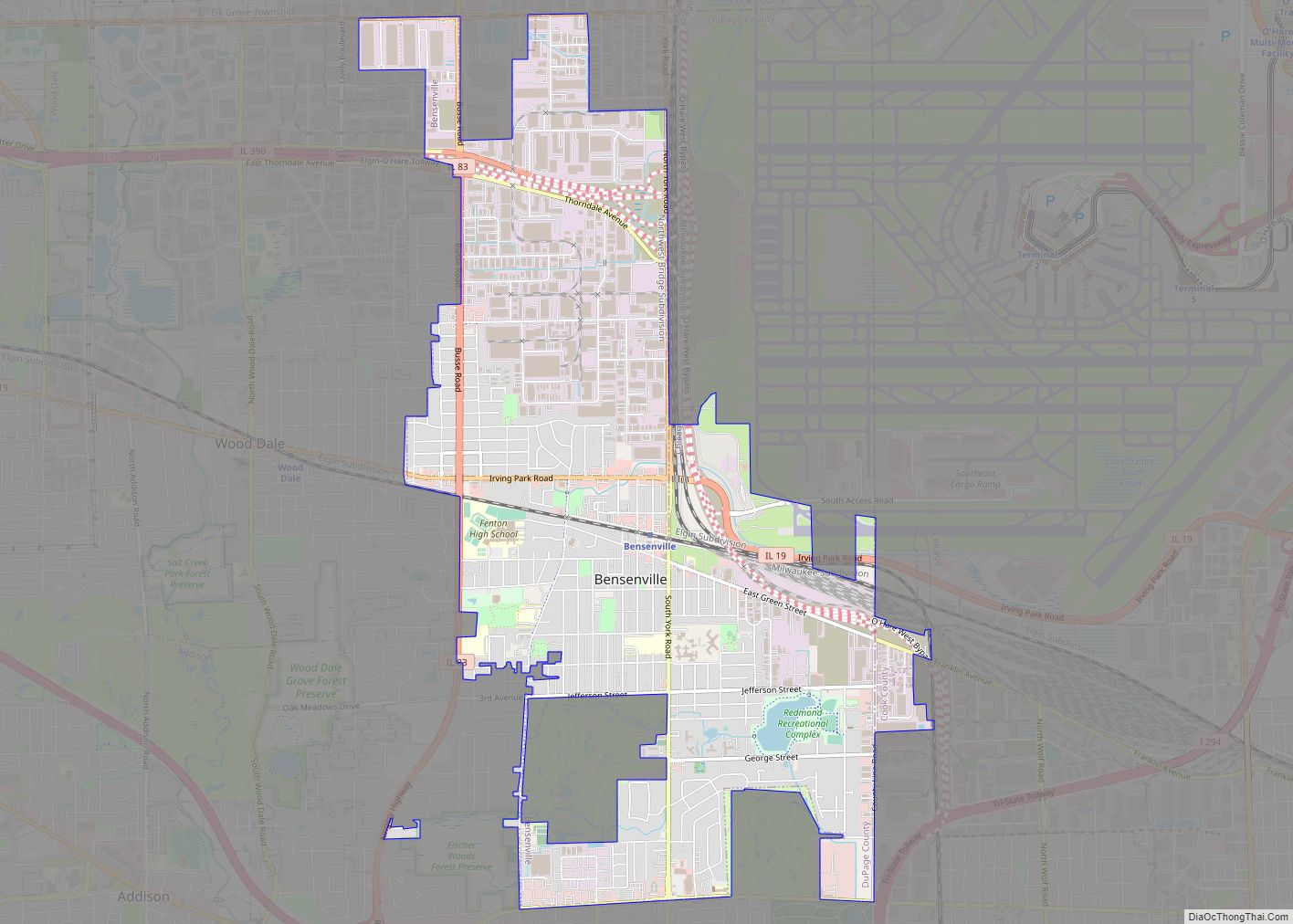Riverside is a suburban village in Cook County, Illinois, United States. A significant portion of the village is in the Riverside Landscape Architecture District, designated a National Historic Landmark in 1970. The population of the village was 9,298 at the 2020 census, up from 8,875 at the 2010 census. It is a suburb of Chicago, located roughly 9 miles (14 km) west of downtown Chicago and 2 miles (3 km) outside city limits.
| Name: | Riverside village |
|---|---|
| LSAD Code: | 47 |
| LSAD Description: | village (suffix) |
| State: | Illinois |
| County: | Cook County |
| Incorporated: | 1875 |
| Total Area: | 2.00 sq mi (5.17 km²) |
| Land Area: | 1.98 sq mi (5.12 km²) |
| Water Area: | 0.02 sq mi (0.05 km²) 1.00% |
| Total Population: | 9,298 |
| Population Density: | 4,700.71/sq mi (1,814.68/km²) |
| Area code: | 708 |
| FIPS code: | 1764421 |
| Website: | www.riverside.il.us |
Online Interactive Map
Click on ![]() to view map in "full screen" mode.
to view map in "full screen" mode.
Riverside location map. Where is Riverside village?
History
Riverside is arguably the first planned suburb (as opposed to a stand-alone community) in the United States, designed in 1869 by Calvert Vaux and Frederick Law Olmsted. The village was incorporated in 1875. The Riverside Landscape Architecture District, an area bounded by 26th Street, Harlem and Ogden avenues, the Des Plaines River, and Golf Road, was designated a National Historic Landmark in 1970. In 1863 the Chicago, Burlington and Quincy Railroad was built heading southwest from downtown Chicago to Quincy, Illinois, passing through what is now the Near West Suburban area of Chicago in a western-southwestern direction. This new access to transportation and commerce brought about a significant housing and construction boom in what was once farmland far from the bustle of the city of Chicago.
In 1868, an eastern businessman named Emery E. Childs formed the Riverside Improvement Company, and purchased a 1,600-acre (6.5 km) tract of property along the Des Plaines River and the Chicago, Burlington and Quincy Railroad line. The site was highly desirable due to its natural oak-hickory forest and its proximity to Chicago. The company commissioned well-known landscape architect Frederick Law Olmsted and his partner, Calvert Vaux, to design a rural bedroom community. The town’s plan, which was completed in 1869, called for curvilinear streets, following the land’s contours and the winding Des Plaines River. The plan also accorded for a central village square, located at the main railroad station, and a Grand Park system that uses several large parks as a foundation, with 41 smaller triangular parks and plazas located at intersections throughout town to provide for additional green spaces.
The Great Chicago Fire of 1871 and the financial Panic of 1873 brought about the demise of the improvement company, bringing new construction nearly to a halt for some time. A village government was established in September 1875, and Olmsted’s original development plan remained in force. Building resumed in the following years, with the opening of the Riverside Golf Club in 1893, the striking Chateauesque Riverside Township Hall in 1895, and the Burlington line train station in 1901. Many homes and estates were designed by architects such as Frank Lloyd Wright, Daniel Burnham, Louis Sullivan, William Le Baron Jenney, Joseph Lyman Silsbee, Frederick Clarke Withers, and Calvert Vaux at the time as well.
A major period of residential development came again in the 1920s and late 1930s, when many modest houses were constructed on smaller parcels. The population grew to 7,935 by 1940 and consisted primarily of small proprietors, managers, and professionals who were predominantly of Anglo-American and German American background. The remaining residential areas were developed during the post–World War II boom, and by 1960 the village was almost entirely developed. The population peaked at 10,357 in 1970 and dropped below 8,500 by the mid-1990s.
Riverside has become an architectural museum, which is recognized by the village’s National Historic Landmark designation. The village housing stock varies from well-maintained 1920s bungalows and huge Victorian and early-twentieth-century mansions that attract architectural tours led by The Frederick Law Olmsted Society of Riverside. The charming village center houses several restaurants as well as coffee shops, and hosts stores selling antiques and Victorian house fixtures, reflective of the village’s older affluent population. In celebration of the 2018 Illinois Bicentennial, Riverside was selected as one of the Illinois 200 Great Places by the American Institute of Architects Illinois component (AIA Illinois).
The Arcade Building and Riverside Township Hall
Looking at downtown Riverside from the Riverside Township Hall
Riverside Road Map
Riverside city Satellite Map
Geography
Riverside is located at 41°49′51″N 87°48′58″W / 41.83083°N 87.81611°W / 41.83083; -87.81611 (41.830881, -87.815981). According to the 2010 census, Riverside has a total area of 1.998 square miles (5.17 km), of which 1.98 square miles (5.13 km) (or 99.1%) is land and 0.018 square miles (0.05 km) (or 0.9%) is water. Bordering suburbs include North Riverside to the north, Berwyn to the east, Stickney and Forest View to the southeast, Lyons and McCook to the south, and Brookfield to the west. The Des Plaines River runs through the village along an area called Swan Pond.
See also
Map of Illinois State and its subdivision:- Adams
- Alexander
- Bond
- Boone
- Brown
- Bureau
- Calhoun
- Carroll
- Cass
- Champaign
- Christian
- Clark
- Clay
- Clinton
- Coles
- Cook
- Crawford
- Cumberland
- De Kalb
- De Witt
- Douglas
- Dupage
- Edgar
- Edwards
- Effingham
- Fayette
- Ford
- Franklin
- Fulton
- Gallatin
- Greene
- Grundy
- Hamilton
- Hancock
- Hardin
- Henderson
- Henry
- Iroquois
- Jackson
- Jasper
- Jefferson
- Jersey
- Jo Daviess
- Johnson
- Kane
- Kankakee
- Kendall
- Knox
- La Salle
- Lake
- Lake Michigan
- Lawrence
- Lee
- Livingston
- Logan
- Macon
- Macoupin
- Madison
- Marion
- Marshall
- Mason
- Massac
- McDonough
- McHenry
- McLean
- Menard
- Mercer
- Monroe
- Montgomery
- Morgan
- Moultrie
- Ogle
- Peoria
- Perry
- Piatt
- Pike
- Pope
- Pulaski
- Putnam
- Randolph
- Richland
- Rock Island
- Saint Clair
- Saline
- Sangamon
- Schuyler
- Scott
- Shelby
- Stark
- Stephenson
- Tazewell
- Union
- Vermilion
- Wabash
- Warren
- Washington
- Wayne
- White
- Whiteside
- Will
- Williamson
- Winnebago
- Woodford
- Alabama
- Alaska
- Arizona
- Arkansas
- California
- Colorado
- Connecticut
- Delaware
- District of Columbia
- Florida
- Georgia
- Hawaii
- Idaho
- Illinois
- Indiana
- Iowa
- Kansas
- Kentucky
- Louisiana
- Maine
- Maryland
- Massachusetts
- Michigan
- Minnesota
- Mississippi
- Missouri
- Montana
- Nebraska
- Nevada
- New Hampshire
- New Jersey
- New Mexico
- New York
- North Carolina
- North Dakota
- Ohio
- Oklahoma
- Oregon
- Pennsylvania
- Rhode Island
- South Carolina
- South Dakota
- Tennessee
- Texas
- Utah
- Vermont
- Virginia
- Washington
- West Virginia
- Wisconsin
- Wyoming
